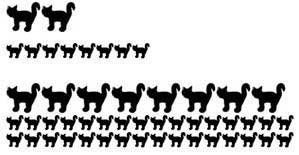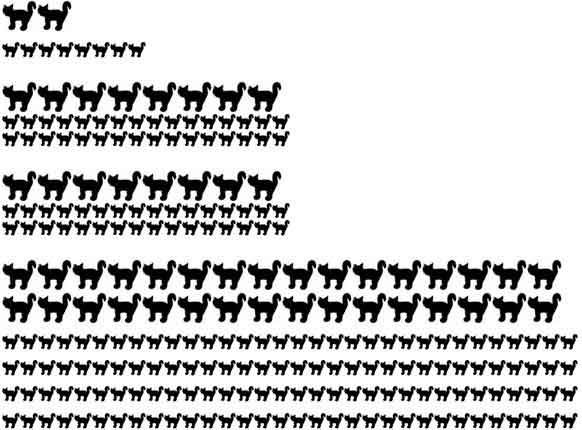About Our ShelterThe Pet ShopShelter Wish ListSurrender an AnimalAbout Spay/NeuterSpay/Neuter/Now Clinic ScheduleImportant Phone NumbersLicensing Your DogLost a Pet?Found a Pet?Medical EmergenciesRabies ClinicsFundraising EventsSPCA Critter Giver 500 ClubDonationsNewsletterWhere There's a Will There's a WayHappy Tails!Links
Written by Kevin Mace L.V.T.; General Manager, Spay/Neuter/Now, Ltd.
Spaying/Neutering your pet is important. There's an excess of unwanted puppies/kittens and dogs/cats in
shelters across the nation.
For every person that is born, 15 dogs and 45 cats are also born. Millions of unwanted puppies and kittens born every year will never find good homes. Every hour nearly 2,500 cats and dogs are born across the United States and our pet population is 100 million.
This problem is too big to be solved by adoption alone.
Please, spay or neuter your pet.
For every person that is born, 15 dogs and 45 cats are also born. Millions of unwanted puppies and kittens born every year will never find good homes. Every hour nearly 2,500 cats and dogs are born across the United States and our pet population is 100 million.
This problem is too big to be solved by adoption alone.
Please, spay or neuter your pet.
What is Spaying/Neutering?
Neutering is the removal of the reproductive organs and is the most common sterilization method in the United
States. Neutering is the general term for spaying (females) and castration (males).
Female spaying involves placing the animal under anesthesia, the surgical site is prepared and then an abdominal incision is made through the skin, subcutaneous tissues and abdominal wall. The ovaries and uterus are tied off (ligated) from the blood supply and then removed. The abdominal wall, subcutaneous tissues and skin are then sutured in multiple layers to prevent a surgical site rupture as the animal recovers.
Male castration involves placing the animal under anesthesia, the surgical site is prepared and then an incision is made through the layers of the scrotum to reach the testicle. Each testicle is tied off (ligated) from the blood supply and then is removed. Occasionally, one or both testicles may not have descended into the scrotum (cryptorchidism), potentially requiring explorative abdominal surgery similar to a female spay surgery.
Anesthesia and spaying/neutering surgery is major surgery and carries inherent risks.
The American Veterinary Medical Association AVMA supports pediatric spay/neuter in dogs and cats at least 8-16 weeks of age in the effort to reduce the number of unwanted animals.
Female spaying involves placing the animal under anesthesia, the surgical site is prepared and then an abdominal incision is made through the skin, subcutaneous tissues and abdominal wall. The ovaries and uterus are tied off (ligated) from the blood supply and then removed. The abdominal wall, subcutaneous tissues and skin are then sutured in multiple layers to prevent a surgical site rupture as the animal recovers.
Male castration involves placing the animal under anesthesia, the surgical site is prepared and then an incision is made through the layers of the scrotum to reach the testicle. Each testicle is tied off (ligated) from the blood supply and then is removed. Occasionally, one or both testicles may not have descended into the scrotum (cryptorchidism), potentially requiring explorative abdominal surgery similar to a female spay surgery.
Anesthesia and spaying/neutering surgery is major surgery and carries inherent risks.
The American Veterinary Medical Association AVMA supports pediatric spay/neuter in dogs and cats at least 8-16 weeks of age in the effort to reduce the number of unwanted animals.
What are the benefits from Spaying/Neutering?
- The animal will no longer be able to reproduce and contribute to the overpopulation crisis.
- Spaying and neutering helps dogs and cats live longer, healthier lives.
- Potential reduction in undesirable sexually dimorphic behaviors such as urine spraying/marking and some forms of aggression.
- Significant or complete reduction of the animal's risk of certain diseases such as mammary, prostate or ovarian/testicular cancers. In most cases, the risks are cut even further if the animal is spayed/neutered before its first heat cycle.
- Removed the potential risk of pyometra (uterine infection), which grows in risk each heat cycle and year of age of un-spayed animals and can become a life-threatening disease.
- Reduced potential stress upon the animal that the estrus (heat) cycle or a pregnancy has upon the body.
The average cat has two litters of 4 kittens each year.
If you start with a male and a female cat (Year 0) this is what can happen:
Year 0 (2 Cats)

Year 1 (10 Cats)

Year 2 (50 Cats)

Year 3 (250 Cats)

Year 4 (1250 Cats)
.jpg)
.jpg)
.jpg)
.jpg)
If you start with a male and a female cat (Year 0) this is what can happen:
Year 0 (2 Cats)

Year 1 (10 Cats)

Year 2 (50 Cats)

Year 3 (250 Cats)

Year 4 (1250 Cats)
.jpg)
.jpg)
.jpg)
.jpg)